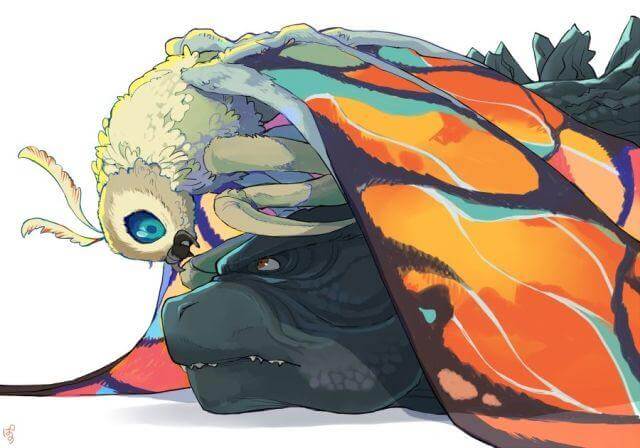[TOC]
前言 本篇博客,将带着大家刷3道非常经典的OJ题。它们并不算特别难,但对我们理解数据结构中栈和队列的概念有很大的帮助。
如果你还不了解栈 ,可以看看我之前 的博客👉点我
队列 的博客就不写啦,本篇刷题的时候会提到队列的操作
话不多说,直接开始吧!
1.用队列实现栈 leetcode:225. 用队列实现栈
这道题的要求很简单,用两个队列来模拟栈的实现。
我们知道,队列的操作是从后进,从前出 ,这就和我们在餐厅排队一样,先进入餐厅排队的人先得到座位。
而栈是遵循上进上出 的,即栈只能在栈顶插入元素和删除元素
两个队列要如何结合,才能实现栈的要求呢?
1.1思路 首先我们讲数据push到其中一个队列中
如果要访问此时的栈顶 ,使用队列中的tail尾指针来访问,即题目要求的TOP函数
当我们需要pop数据的时候,将队列中的N-1个数据全部移动到另外一个队列里,再将最后的栈顶数据删除并返回
最终的目的就是保证一个队列为空,另外一个队列保存数据
这样就达成了栈只能在栈顶删除数据的要求
最后还有一个函数是boolean empty() 如果栈是空的,返回 true ;否则,返回 false 。
当两个队列中都没有数据的时候,这个模拟的栈就是空的; 只要其中一个队列有数据的时候,就代表这个栈是有数据的。 1.2队列的代码 你可能会注意到,这道题中并没有给我们初始的队列代码,也就是说我们需要“造轮子”,将自己写的C语言队列代码放在前头
这里我贴出一个队列的代码,大家可以复制到自己的编译器上测试一下。
如果有不理解的地方,可以在评论区提出 !
和栈的代码实现不同,队列使用链表的方式更加方便。其相当于一个只能尾插和头删的单链表 为了方便我们找尾进行尾插,这里定义了另外一个结构体类型Queue,其中tail指针指向链表的尾部,方便尾插(否则每次尾插都需要遍历) 1 2 3 4 5 6 7 8 9 10 11 12 13 14 15 16 17 18 19 20 21 22 23 24 25 26 27 28 29 30 31 32 33 34 35 36 37 38 39 40 41 42 43 44 45 46 47 48 49 50 51 52 53 54 55 56 57 58 59 60 61 62 63 64 65 66 67 68 69 70 71 72 73 74 75 76 77 78 79 80 81 82 83 84 85 86 87 88 89 90 91 92 93 94 95 96 97 98 99 100 101 102 103 104 105 106 107 108 109 110 111 112 113 114 115 116 117 118 119 120 typedef int QDataType;typedef struct QueueNode { QDataType data; struct QueueNode * next ; }QNode; typedef struct Queue { QNode* head; QNode* tail; }Queue; void QueueInit (Queue* pq) { assert(pq); pq->head = NULL ; pq->tail = NULL ; } void QueueDestory (Queue* pq) { assert(pq); QNode* findtail = pq->head; while (findtail) { QNode* next = findtail->next; free (findtail); findtail = next; } pq->head = NULL ; pq->tail = NULL ; } void QueuePush (Queue* pq, QDataType x) { assert(pq); QNode* newnode = (QNode*)malloc (sizeof (QNode)); if (newnode == NULL ) { printf ("Push err\n" ); exit (-1 ); } newnode->data = x; newnode->next = NULL ; if (pq->tail == NULL ) { assert(pq->head == NULL ); pq->head = pq->tail = newnode; } else { pq->tail->next = newnode; pq->tail = newnode; } return ; } void QueuePop (Queue* pq) { assert(pq); assert(pq->head && pq->tail); if (pq->head->next == NULL ) { free (pq->head); pq->head = NULL ; pq->tail = NULL ; } else { QNode* next = pq->head->next; free (pq->head); pq->head = next; } } bool QueueEmpty (Queue* pq) { assert(pq); return pq->head == NULL && pq->tail == NULL ; } size_t QueueSize (Queue* pq) { assert(pq); size_t size = 0 ; QNode* findtail = pq->head; while (findtail) { size++; findtail = findtail->next; } return size; } QDataType QueueFront (Queue* pq) { assert(pq); assert(pq->head); return pq->head->data; } QDataType QueueBack (Queue* pq) { assert(pq); assert(pq->tail); return pq->tail->data; }
1.3本题的代码 将上述的队列代码拷贝在题目所给模板之前后,我们就可以开始写这道题需要的代码实现了
1 2 3 4 5 6 7 8 9 10 11 12 13 14 15 16 17 18 19 20 21 22 23 24 25 26 27 28 29 30 31 32 33 34 35 36 37 38 39 40 41 42 43 44 45 46 47 48 49 50 51 52 53 54 55 56 57 58 59 60 61 62 63 64 65 66 67 68 69 70 71 72 73 74 75 76 77 78 79 80 81 82 83 84 typedef struct { Queue q1; Queue q2; } MyStack; MyStack* myStackCreate () { MyStack* pst = (MyStack*)malloc (sizeof (MyStack)); if (pst == NULL ) return NULL ; QueueInit(&pst->q1); QueueInit(&pst->q2); return pst; } void myStackPush (MyStack* obj, int x) { assert(obj); if (!QueueEmpty(&obj->q1)) { QueuePush(&obj->q1, x); } else { QueuePush(&obj->q2, x); } } int myStackPop (MyStack* obj) { assert(obj); Queue* empty = &obj->q1; Queue* unempty = &obj->q2; if (!QueueEmpty(&obj->q1)) { empty = &obj->q2; unempty = &obj->q1; } while (QueueSize(unempty) > 1 ) { int top1 = QueueFront(unempty); QueuePush(empty, top1); QueuePop(unempty); } int top = QueueFront(unempty); QueuePop(unempty); return top; } int myStackTop (MyStack* obj) { assert(obj); if (!QueueEmpty(&obj->q1)) { return QueueBack(&obj->q1); } else { return QueueBack(&obj->q2); } } bool myStackEmpty (MyStack* obj) { assert(obj); return QueueEmpty(&obj->q1) && QueueEmpty(&obj->q2); } void myStackFree (MyStack* obj) { assert(obj); QueueDestory(&obj->q1); QueueDestory(&obj->q2); free (obj); return ; }
16个用例都完美通过了!
1.4优化设计 使用一个队列就能实现这个功能。
数据入队列; 需要top/pop的时候,将队列前的数据全部重新移动到队列尾部,留下最后一个,就是栈顶数据; top函数调用完毕后需要将剩下的这个数据也移动到队列尾部; pop函数调用完毕后将size--; 代码如下
1 2 3 4 5 6 7 8 9 10 11 12 13 14 15 16 17 18 19 20 21 22 23 24 25 26 27 28 29 30 31 32 33 34 35 36 37 38 39 40 41 42 43 44 45 46 47 48 49 50 51 52 53 54 55 56 57 class MyStack { int size = 0 ; queue<int > que; public : MyStack () { } void push (int x) que.push (x); size++; } int pop () int count = size; while (count-->1 ){ int temp = que.front (); que.pop (); que.push (temp); } int ret = que.front (); que.pop (); size--; return ret; } int top () int count = size; while (count-->1 ){ int temp = que.front (); que.pop (); que.push (temp); } int ret = que.front (); que.push (ret); que.pop (); return ret; } bool empty () return size == 0 ; } };
2.用栈实现队列 leetcode: 232. 用栈实现队列
有了上一道题目的经验,这道题的实现就不那么困难了。
2.1思路 栈的特点是只能在栈顶删除和插入数据
队列需要在队尾插入数据,在对头删除数据
假设现在我们有下面这两个栈,第一个栈里面存放了1 2 3 4的数据
需要进行队列的POP 操作时,我们需要删除的是最底部的1
可以先将栈中的所有数据pop并push到另外一个空栈 中,再将最后一个数据存放后删除,返回存放的值。
这部分操作与第一题中的操作很像,但是有一个致命的问题 :在新的栈里的数据和我们原本想要的数据是相反的!
1 2 3 1 2 3 4 删除1 后原本数据 2 3 4 实际数据 4 3 2
解决这个问题的方法只有一个,那就是把这一批数据再复制回原本的栈中,它的顺序就对了
而我自己写的栈是用数组 实现的,题目要求的peek函数可以直接通过访问非空栈的0下标 元素得到
empty函数同理,只有两个栈中都为空时,模拟的队列才是空的
2.2栈的代码 栈的实现在本文开头的博客链接中有详细解释,这里不再复述
回到开头
1 2 3 4 5 6 7 8 9 10 11 12 13 14 15 16 17 18 19 20 21 22 23 24 25 26 27 28 29 30 31 32 33 34 35 36 37 38 39 40 41 42 43 44 45 46 47 48 49 50 51 52 53 54 55 56 57 58 59 60 61 62 63 64 65 66 67 68 69 70 71 72 73 74 75 76 77 78 79 80 81 82 83 84 85 86 87 88 89 90 91 92 93 94 95 96 97 98 typedef int STDataType;typedef struct Stack { STDataType* a; int top; int capacity; }Stack; void StackInit (Stack* ps) { STDataType* new = (STDataType*)malloc (sizeof (STDataType) * 4 ); if (new == NULL ) { exit (-1 ); } else { ps->a = new; ps->top = 0 ; ps->capacity = 4 ; } } void StackDestroy (Stack* ps) { assert(ps); free (ps->a); ps->a = NULL ; ps->capacity = 0 ; ps->top = 0 ; } void StackPush (Stack* ps, STDataType data) { assert(ps); if (ps->top == ps->capacity) { STDataType* new = (STDataType*)realloc (ps->a, sizeof (STDataType) * (ps->capacity) * 2 ); if (new == NULL ) { exit (-1 ); } else { ps->a = new; ps->capacity *= 2 ; } } ps->a[ps->top] = data; ps->top++; } void StackPop (Stack* ps) { assert(ps); if (ps->top > 0 ) (ps->top)--; } STDataType StackTop (Stack* ps) { assert(ps); assert(ps->top > 0 ); return ps->a[ps->top - 1 ]; } int StackSize (Stack* ps) { assert(ps); return ps->top; } bool StackEmpty (Stack* ps) { assert(ps); if (ps->top == 0 ) return true ; else return false ; } void StackPrint (Stack* ps) { assert(ps); int n = ps->top; for (int i = 0 ; i < n; i++) { printf ("%d " , ps->a[i]); } printf ("\n" ); }
2.3本题的代码 1 2 3 4 5 6 7 8 9 10 11 12 13 14 15 16 17 18 19 20 21 22 23 24 25 26 27 28 29 30 31 32 33 34 35 36 37 38 39 40 41 42 43 44 45 46 47 48 49 50 51 52 53 54 55 56 57 58 59 60 61 62 63 64 65 66 67 68 69 70 71 72 73 74 75 76 77 78 79 80 81 82 83 84 85 86 87 88 89 90 typedef struct { Stack st1; Stack st2; } MyQueue; MyQueue* myQueueCreate () { MyQueue* qt = (MyQueue*)malloc (sizeof (MyQueue)); if (qt == NULL ) return NULL ; StackInit(&qt->st1); StackInit(&qt->st2); return qt; } void myQueuePush (MyQueue* obj, int x) { assert(obj); if (!StackEmpty(&obj->st1)) { StackPush(&obj->st1, x); } else { StackPush(&obj->st2, x); } return ; } int myQueuePop (MyQueue* obj) { assert(obj); Stack* empty = &obj->st1; Stack* nonempty = &obj->st2; if (!StackEmpty(&obj->st1)) { Stack* empty = &obj->st2; Stack* nonempty = &obj->st1; } while (StackSize(nonempty) > 1 ) { int top1 = StackTop(nonempty); StackPush(empty, top1); StackPop(nonempty); } int top = StackTop(nonempty); StackPop(nonempty); while (StackSize(empty) > 0 ) { int top2 = StackTop(empty); StackPush(nonempty, top2); StackPop(empty); } return top; } int myQueuePeek (MyQueue* obj) { assert(obj); Stack* empty = &obj->st1; Stack* nonempty = &obj->st2; if (!StackEmpty(&obj->st1)) { Stack* empty = &obj->st2; Stack* nonempty = &obj->st1; } return nonempty->a[0 ]; } bool myQueueEmpty (MyQueue* obj) { assert(obj); return StackEmpty(&obj->st1) && StackEmpty(&obj->st2); } void myQueueFree (MyQueue* obj) { assert(obj); StackDestroy(&obj->st1); StackDestroy(&obj->st2); free (obj); return ; }
2.4优化设计 上面的这个方法在peek和pop的时候都需要把数据搬两次,比较麻烦;
但使用另外一种方式,一个做入栈,一个做出栈,就可以减少数据在两个栈间拷贝的次数。
队列插入数据的时候,往入栈插入; 队列删除数据的时候,将入栈的所有数据弹出并插入出栈,此时出栈顶部就是需要删除的数据; 新数据插入,继续往入栈插入,重复上述两个步骤。 出队列的时候需要遵循先入先出的顺序,如果出栈中有数据,那么就直接取就是需要出队列的数据了。出栈中没有数据,才需要将入栈中的所有数据都放入出栈。
代码如下
1 2 3 4 5 6 7 8 9 10 11 12 13 14 15 16 17 18 19 20 21 22 23 24 25 26 27 28 29 30 31 32 33 34 35 36 37 38 39 40 41 42 43 44 45 46 47 48 class MyQueue { stack<int > stIn,stOut; int size = 0 ; public : MyQueue () { } void push (int x) stIn.push (x); size++; } int pop () int ret = peek (); stOut.pop (); size--; return ret; } int peek () if (stOut.empty ()){ int count = size; while (count--) { stOut.push (stIn.top ()); stIn.pop (); } } int ret = stOut.top (); return ret; } bool empty () return size == 0 ; } };
3.设计循环队列 leetcode:622. 设计循环队列
这道题最主要的突破口,就是弄明白题目所说的循环队列的意思
实际上他就是一个下图所示的队列,当tail使用完已有空间后,可以跳到前面继续使用之前开辟好的空间,而不需要额外的扩容空间。
为了方便找头以及找尾,本体将使用数组方式来实现它的代码
3.1思路 确定是数组形式后,我们就要来思考两个问题:什么时候队列为空?什么时候队列是满?
3.1.1判断是否为空 这个看起来好像非常简单,只要头指针和尾指针相同,队列不就是空的了嘛!
这个想法对,但有有点瑕疵,即我们怎么界定空和非空的界限?
3.1.2判断是否为满 每插入一个数据,tail指针就会往后++一次,指向已有数据的下一位
当下一位也被装好了数据之后,tail就会回到开头 ,来到front指针的位置!
这个时候,tail=front,但是队列实际上已经满了!
这就让我们不得不思考,如何将这两种情况区分开来?
啊哈哈哈哈,答案来喽:
如果需要的数据为K个,为队列的数组开辟K+1个空间
这时候,只要tail+1=front,就代表队列已经满了。多出来的这一个空间不存放数据
注意:这个空间不一定是最末尾的哪一个,它会随着队列的插入、删除操作而移动 当tail在尾部,tail=k(注意tail是下标而不是指针)且front=0时,队列为满
这样就很完美的把空和满 两种情况给区分开来了!
3.2本题代码实现 需要注意题目给出的返回值要求,依照题目函数要求来编写
1 2 3 4 5 6 7 8 9 10 11 12 13 14 15 16 17 18 19 20 21 22 23 24 25 26 27 28 29 30 31 32 33 34 35 36 37 38 39 40 41 42 43 44 45 46 47 48 49 50 51 52 53 54 55 56 57 58 59 60 61 62 63 64 65 66 67 68 69 70 71 72 73 74 75 76 77 78 79 80 81 82 83 84 85 86 87 88 89 90 91 92 93 94 95 96 97 98 99 100 101 102 103 104 105 106 107 108 109 110 111 112 113 typedef struct { int * data; int front; int tail; int k; } MyCircularQueue; bool myCircularQueueIsEmpty (MyCircularQueue* obj) ;bool myCircularQueueIsFull (MyCircularQueue* obj) ;MyCircularQueue* myCircularQueueCreate (int k) { MyCircularQueue* qt = (MyCircularQueue*)malloc (sizeof (MyCircularQueue)); if (qt == NULL ) return NULL ; qt->data = (int *)malloc (sizeof (int ) * (k + 1 )); qt->k = k; qt->front = 0 ; qt->tail = 0 ; return qt; } bool myCircularQueueEnQueue (MyCircularQueue* obj, int value) { assert(obj); if (myCircularQueueIsFull(obj)) return false ; obj->data[obj->tail] = value; if (obj->tail == obj->k) { obj->tail = 0 ; } else { obj->tail ++ ; } return true ; } bool myCircularQueueDeQueue (MyCircularQueue* obj) { assert(obj); if (myCircularQueueIsEmpty(obj)) return false ; if (obj->front == obj->k) { obj->front = 0 ; } else { obj->front++; } return true ; } int myCircularQueueFront (MyCircularQueue* obj) { assert(obj); if (myCircularQueueIsEmpty(obj)) return -1 ; return obj->data[obj->front]; } int myCircularQueueRear (MyCircularQueue* obj) { assert(obj); if (myCircularQueueIsEmpty(obj)) return -1 ; if (obj->tail == 0 ) { return obj->data[obj->k]; } else { return obj->data[obj->tail - 1 ]; } return -1 ; } bool myCircularQueueIsEmpty (MyCircularQueue* obj) { return obj->tail == obj->front; } bool myCircularQueueIsFull (MyCircularQueue* obj) { if ((obj->tail == obj->k) && obj->front == 0 ) { return true ; } else { return obj->tail + 1 == obj->front; } } void myCircularQueueFree (MyCircularQueue* obj) { assert(obj); free (obj->data); free (obj); return ; }
结语 刷完这3道题,有没有感觉数据结构的很多内容都是关系紧密的?🤩
只要我们把链表和顺序表的内容 搞得透彻,栈和队列这部分就没那么难了!
加油!





















